Coal Creek and Falkirk Mine
August 30th, 2006
Long long day, but hey, I gots me a lump or two of coal!!
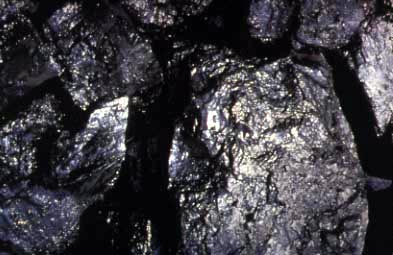
Suffice it to say, I’ve got issues with coal, and am disturbed at the line of coal plants waiting in the MISO queue: Active & Done MISO Queue Last I checked, there was over 20,000MW of coal sitting and waiting, and if they build even 1/3 of it, that’s too much in my book.  This has been a concern of mine since that 2002 SW MN study that had the big list of coal plants waiting in queue, and which would be the first on line if the SW transmission line was built (See p. 29-30 of the study) Oh well…
Here’s Coal Creek on the way up:
As we drove to Coal Creek, past wind turbines to the east, our local host told us about a fire at his father’s farm, a victim of the extremely dry summer, most of the outbuildings were lost, and we saw the result first hand at 70 mph. Here are the depressing photos of the fire. (after that, cheer yourself up with some others from this site, www.prairiejournal.com, a detailed view of life on the prairie, on that farm.) The previous day, a fire had started at the rest area while we were there, and quickly took over a field.
Anyway, back to lumps of coal. Today’s coal was picked fresh today from the Falkirk mine. But that was a bit much in the propaganda department, so enough of that…
On to Coal Creek. That was another, suprisingly very little in the way of hype and propaganda, and a realistic assessment/appraisal of coal in 2006, of course from a coal generating plant perspective, but the direct approach was refreshing. We had a tour of the plant, and other than being terrified on the 8th and 21st floor with nothing but a flimsey grate underfoot, it was great. Coal Creek is a 1,180MW two unit pulverized coal generating plant that, when built, cost $750 million. There are 210 employees. Coal Creek is a twin of another twin, Sherco, same design, essentially. There have been some changes that lowered nasty emissions, and there will be a couple more in over the next four years that will increase output by 30MW for each generator.
Here’s the control room, in the background in the tan metal is the old control room, with manual switches and gauges, some of which is still used today, but as you can see, it’s mostly computerized, down to operation of process water seven miles away at the river.
This is a scene as I remember from power plant tours as a kid… generators in a huge room, apparently all that space is for when they tear it down and like my little bro’ and my ’64 Galaxie, parts go all over the floor. Here’s the scary part, up on the 21st floor:
They’re doing a coal drying experiment, funded by the DOE that not only reduces the moisture of the coal, but increases efficiency of about 5% and redused emissions, some significant. It’s a cooperative agreement, not a grant, but an interest free loan.
We also got the poop on another GRE effort, called Blue Flint, which is cogeneration for ethanol production, a plant permitted for 65 million gallons, and planned for 50 million gallons annually. It’s being built now, pieces arrive regularly. It’s the stuff in the 21st floor photo that’s in front of the ponds.
Even better, I gots me a coal plant carved out of coal. Way cool…
More on all this manana… it’s tired out.
Next stop — Falkirk Mine and Coal Creek
August 29th, 2006
It’s a short, but assuredly strange trip!
Tomorrow morning, at too early o’clock, it’s off to the Falkirk Mine.
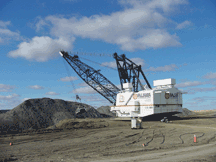
And then, sightseeing and touring the Coal Creek plant. Here’s GRE‘s piece, “How do we stack up?”
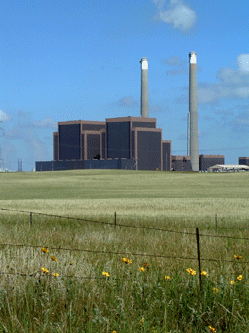
One more for the road…
August 28th, 2006
More on Mesaba — gotta get this posted before I hit the road:
I swear the reporter who wrote this was under the influence when he wrote back to me. The response I got when I sent some info about his false statements, like his report that the price of Mesaba is $1 billion, OH MY, his response is so bad I won’t even post it, now that’s awful — as another reporter opined, “HOLEEEE HELL…”
Here’s the report on the Hoyt Lakes meeting from Virginia’s Mesabi Daily News:
A tale of two different meetingsÂ
Yes, it was the best of times and the worst of times.
Here’s that same paper’s “editorial” with same material factual errors:
Mesaba Energy project vital for country, area: Knee-jerk opposition a narrow view
I’ve got to include the whole thing, for those of you who haven’t had your daily guffaw:
Mesaba Energy project vital for country, area
Knee-jerk opposition a narrow view
Mesabi Daily News
Saturday, August 26th, 2006 08:03:43 PMAmericans who support continued dependence on foreign oil as our main energy source we would hope are quickly becoming an endangered species â?? if they arenâ??t yet already there.
There is a strong and growing sentiment in this country â?? which we believe should have been instilled years ago â?? that we need to proclaim our energy independence.
And we believe that means embracing a diversified U.S.-first energy program, which is not beholden to any special interest group, whether big business or environmental.
So why in the name of energy dependence is there such an outcry by a vocal few in the area to a proposed new energy source that will be good for Minnesota and the entire country?
We are amazed that some people have become so worked up over the Mesaba Energy Projectâ??s coal gasification initiative, especially considering that it is not only part of a more energy-independent U.S. policy, but it will also be a source of many, many construction jobs and hundreds of permanent jobs on the Iron Range.
The project calls for three clean-coal plants, the first one to be built near Taconite in Itasca County and the other two to be constructed at yet to be determined sites on the central Range and the eastern Range. Each of the facilities will cost about $1 billion in preparation, design, permitting and construction. And each of the facilities are expected to provide 1,000 construction jobs and more than 100 permanent jobs.
The Mesaba Energy project already has Iron Range Resources, county, state and federal support. The federal loan guarantees secured in last yearâ??s energy bill are impressive indeed. They point to a national consensus across the country and in Washington that itâ??s high time we move ahead to a much more energy independent future, which most definitely includes using our own abundant coal resources made much more environmentally clean through modern technology.
That doesnâ??t sit well with some environmentalists. But if we let our national energy policy … not to mention our local economic development policy … be dictated by such narrow viewpoints then we will all lose out in many different ways.
The Mesaba Energy project will receive plenty of study and ample permitting scrutiny before it goes online. The monitoring process is in place, as is the public review process. And, as is already the case, there is plenty of opportunities for opponents to have their say and carry forth their message.
But supporters of a more energy-independent policy with multiple uses are also being heard. And, so too, are supporters of the Mesaba Energy project.
============================================
And that’s the sorry state of “journalism” today… but hey, what’s a missing $.97 billion on a $1.97 billion dollar project after all… it’s only numbers…
Rowley on the draft
August 26th, 2006
In today’s STrib is another example…
2nd District candidates Kline, Rowley meet at state fair forum
Asked whether the United States needs a military draft, Kline said emphatically no. But Rowley said she would keep an “open mind” because the country probably would not be at war in Iraq if more Americans had a direct personal stake in military service and because “our military is weakened now to the breaking point.”
… time to trot these tired guys out again…
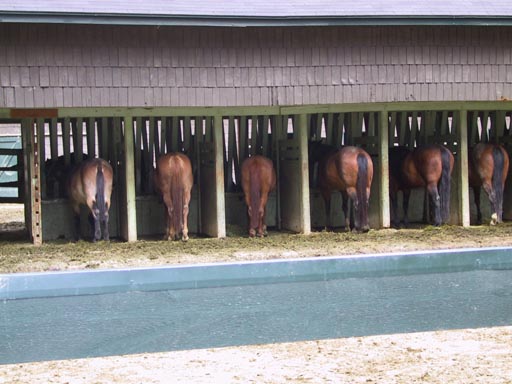
Hibbing DN reports on Excelsior Hearing
August 26th, 2006
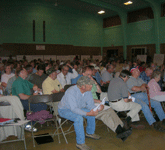
Hearing photo by Melissa Cox, Hibbing Daily News
Coal-fed gasification plant fires up controversy
Friday, August 25th, 2006 09:19:57 AM
by Melissa Cox, Staff Writer
TACONITE â?? Want a coal-fed gasification plant as your neighbor?
Area residents that attended a meeting Tuesday night regarding the proposed Mesaba Energy project had divided opinions on whether a coal-fired gasification plant should be built near Taconite.
The gymnasium at Taconite Community Center overflowed with people who expressed their views and asked questions regarding the proposed project.
An informational and Environmental Impact Statement (EIS) Scoping meeting was conducted Tuesday by the Minnesota Department of Commerce (DOC) in Taconite, with a second meeting conducted Wednesday in Hoyt Lakes.
Taconite is the proposed site for the coal-fed Integrated Gasification Combined Cycle (IGCC) power generation facility, which would be constructed in two phases. Each phase would have the capability of producing approximately 600 megawatts of base load power. Hoyt Lakes is the alternative site for the project.
Construction of the proposed project would start in 2008 with the plant in service date expected in 2011. There would be about 3,000 jobs directly and indirectly during construction, with more than 100 people employed during operation.
Excelsior Energy, which would construct and operate the facility, has submitted a Joint Permit Application to the Public Utilities Commission (PUC) for the proposed project.
As part of the permitting process, public participation and environmental review is required.
Before public comment, Bill Storm of the DOC explained the process to attendees. The full review process is used for larger projects such as this one. Applicants must identify preferred and alternative sites. The PUC has one year from the time the application is accepted to reach final decision, explained Storm.
â??There are two purposes to this meeting,â? said Storm during his presentation. â??One is to provide information to the public on the proposal and two is solicit input from the public on what they think should be covered in the Environmental Impact Statement.â?
The DOC has the authority to determine what environmental impacts and alternatives will be examined when environmental review is conducted, said Storm.
He said the purpose of the EIS scoping process is to reduce the bulk of the EIS by identifying potentially significant issues and alternatives requiring analysis.
The public also heard from Jason Lewis from the Department of Energy regarding the Clean Coal Power Initiative. While describing the technology that would be used in the proposed project, he said the technology used is the future of coal base power generation.
Robert Evans, vice president of environmental affairs from Excelsior Energy gave an overview of the project, described the technology used, addressed environmental and health risks associated with the project and explained the reasoning behind wanting to locate on the West Range.
He said this project minimizes air pollutant emissions and fine particulate matter formation, minimizes mercury emissions, and has lower carbon dioxide emissions relative to other plants.
â??We have less emissions than a brand new traditional coal-fired plant,â? said Evans during his presentation.
While looking at health risks, he noted that carbon monoxide emissions are lower as well.
â??You see the same thing over and over that the emissions from this facility are very low and are far below the thresholds for protection,â? he said.
While looking at cancer risks from the plant, Evans pointed out that the agency hasnâ??t gone through its complete review of this information. He used the charts to compare the two units for the proposed project to the PCA thresholds of acceptability. He said the acceptable thresholds for groups of chemicals has a lifetime cancer risk of one in a population of 100,000, while the Mesaba Energy project risk that comes out of the models is one out of a million. He said the model also shows a lower risk for cancer than the Itasca County ambient air levels.
Evans also discussed why the West Range is suitable for the project including that it is privately zoned industrial, it has two rail providers, natural gas pipeline and water resource. He said water for the project would come from Canisteo Mine and Hill Annex State Park pits, which would significantly reduce flood potential the area is experiencing.
He said where there are land ownersâ?? concerns they are going to treat them fairly.
The next steps for Excelsior Energy include continuing to work with state agencies, listening to concerns from citizens and addressing them as best they can, submitting the wetlands permit application, holding monthly meetings to identify issues in the community, and continuing to collect data.
â??We think the more people know about the project the better it is going to look to them,â? he said. â??We are not just blind optimists; we know it is good technology.â?
o
Public Comment
After the presentations the floor was open to the public. One by one people who had signed up prior to the meeting voiced their opinions and concerns.
The meeting lasted more than three hours with more than 20 citizens speaking up, the majority had concerns about the project. Each time someone spoke out against the project, attendees responded with applause.
Joan Beech of rural Bovey, who lives three to four miles from the proposed site, was the first one to speak at the meeting. She said it is about time there is this type of hearing for public input.
â??To have information meetings is important, but to have citizen input is also important,â? she said. â??And we thank you all for being here. To see the number is just incredible.â?
She went on to ask why project officials chose this site versus the East Range?
â??So that would be my concern, why this site in the midst of a county that has hundreds and hundreds of very pristine lakes?â? she asked.
Another concern she raised was regarding mercury emissions, which she pointed out never goes away.
â??We need to have much more information and need to be guaranteed this will not harm pregnant women, children and the population,â? she said.
Living on Scenic Highway 7 about 400 feet from the proposed site is Peggy Mikulich, who attended the meeting. Her concerns included contamination of the well water, how the project would affect Canisteo Pit, noise levels and if chances of getting cancer increase by living by transmission lines.
Matthew Miltich of Grand Rapids said he didnâ??t agree with project officials using the phrase â??when it happensâ? versus â??if it happensâ? when referring to the project.
â??Isnâ??t that a huge assumption, when it happens instead of it if happens,â? he said. â??I thought this was supposed to be input from us …,â? he said, which resulted in applause from the audience.
He said it looks like the government is â??pretty well in bed with the energy companies,â? and that â??using the term clean coal is about like using the term virtuous pornography,â? adding that â??coal is not clean.â?
â??You canâ??t just come in here and change a whole way of life and expect that we are just going to agree with it because of your soft promises,â? said Miltich. â??We heard soft promises over and over again. The people who support those people who want to do this, if they are up for election had better watch out because next time around I will run if I have to.â?
Curt Christopherson, landowner on Diamond Lake, who also owns 100 acres across the road, said he is what people might call the â??poster child for eminent domain in this issue.â? When he found out about this project, he said initially Excelsior Energy failed to tell him there was a railroad running through his land.
He too, noted that elections were coming up and he will keep in mind the officials who support this project and those who donâ??t when voting.
Charles Decker of Hibbing said it is important to look at the project in terms of risk versus rewards. He said the rewards as he sees them include the 100 jobs, which he said isnâ??t really a lot of reward.
Decker, a physician, said the presentation was interesting regarding the cancer risks that showed Itasca County breathing ambient air having a higher cancer rate of those breathing the air at Mesaba Energy plant.
â??Maybe that adds up that if you work at the Mesaba Energy plant you lower your cancer risk â?? that study should be looked at,â? he said.
Only a handful of attendeesâ?? comments focused on the potential benefits of the project. One was from Peter McDermott who talked about the economic impact the project would have on the area. He said Itasca County poverty and unemployment are significantly higher than the state averages.
â??The Mesaba Energy project has the potential to turn this trend around,â? he said.
His remarks were followed by lighter applause. Another was from Michael Andrews who said he had to move away from this area because there werenâ??t any good quality jobs in the area. He said it is a shame kids have to go away to find good paying jobs.
The public comments continued late into the evening with people who didnâ??t sign up prior also having a chance to air their remarks.
The comments aired covered a long list of concerns and questions including, but not limited to:
â?¢ Would water and recreation in Canisteo Mine Pit be harmed?
â?¢ How does eminent domain work?
â?¢ How would the project affect nearby well water?
â?¢ Why would an energy plant want to build a power plant in Minnesota away from coal fields?
â?¢ Why is the West Range an ideal location?
â?¢ Will the water temperature of nearby lakes rise and affect fish populations?
â?¢ What will be the noise level from the plant?
â?¢ What will it cost the taxpayer?
â?¢ What will mercury levels be?
â?¢ Will lake trout fishing be taken into consideration?
â?¢ Why did Excelsior Energy have to ask local governments for monetary assistance for infrastructure?
â?¢ Shouldnâ??t the plant be build in the metropolitan area where the power is going?
â?¢ Will blow off dust from railroad cars affect Diamond Lake?
â?¢ Why not try a windmill power generating facility which has less fuel costs and environmental impact of zero
â?¢ What will the levels of air and water emission be?
â?¢ Who will pay the bill if the project fails?
â?¢ What type of people will the plant employ?
All the comments were recorded and will be considered when the DOC commissioner determines what environmental impacts and what alternatives will be examined when environmental review is conducted, according to a DOC fact sheet. The public record is created for the PUCâ??s consideration in making a final decision on the permit, according to a DOC fact sheet.
The public has until Wednesday, Aug. 30, 2006, to submit written comments on the scope of the EIS for this project. Written comments should be mailed to: Bill Storm, the Minnesota Department of Commerce, 85 7th Place, Suite 500, St. Paul, MN 55101-2198. ==========================================
Here’s the Commerce Docket: RIGHT HERE! This is where you find the Excelsior application and other documents that have been filed.
Here’s the DRAFT Scoping Document, with Commerce perspective of what should be included in the Environmental Impact Statement, and which would form the basis of your comments == what’s there, what’s missing… Scoping Document here!
FYI, you can also email comments: bill.storm@state.mn.us